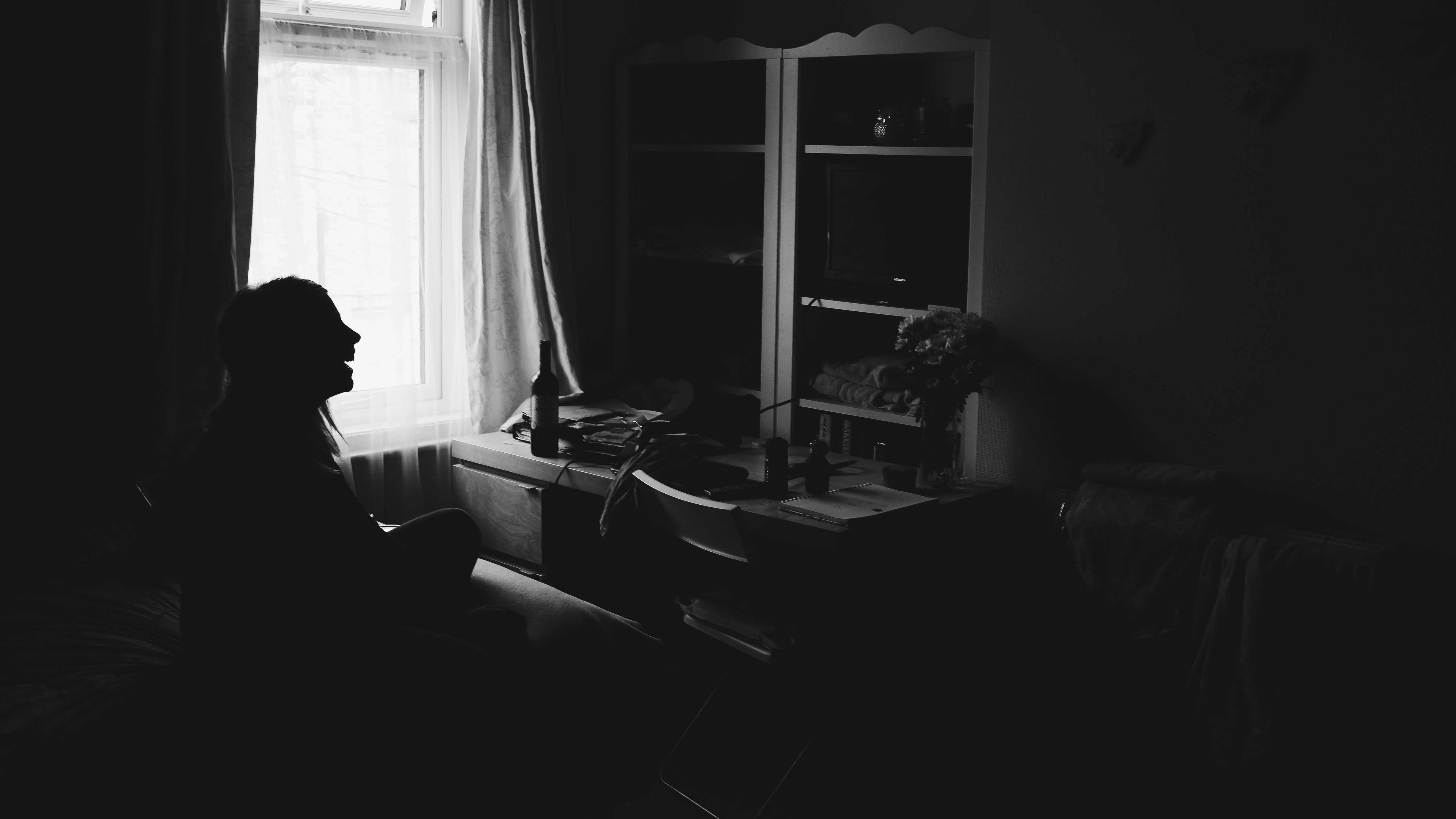Sample by My Essay Writer

Introduction
Psychiatric disorders are mental illnesses that cause poor functioning of one’s cognitive functions; it could be as a result of congenital malformations or in other cases due to ones involvement in certain activities that could predispose them to those conditions. These mental illnesses are caused or influenced by people’s life experiences or could be as a result of maladjustments during the person’s cognitive and behavioral processes. Some of these conditions are; schizophrenia, mood disorders, bipolar disorders and factitious disorders among many others. Psychiatric/psychosocial Rehabilitation (PSR) involves a set of practices that are aimed towards facilitating the recovery of individuals in the society with these conditions. This paper, thus, explores one psychiatric disorder, its diagnosis and how it impacts on the theory and application of PSR concepts.
Schizophrenia is psychiatric/psychotic disorder that afflicts approximately one percent of adults in the world. There is no definitive cause of schizophrenia currently and so Schizophrenia is believed to be caused by a combination of brain chemistry, brain abnormalities, genetic makeup and environmental factors. Doctors believe that there are specific genes which are responsible for causing schizophrenia; it is thus believed that this could be passed on among family members as seen in inheritance.[“Write my essay for me?” Get help here.]
I chose to research on schizophrenia because it is a condition that many patients at Cedar Ridge Residential Mental Health Facility and I interact with mostly during some of their activities. I thus felt that a vast knowledge about the condition would help and even improve the services offered by the staff and even myself towards the patients. I also felt that this information, based on Pyschoeducation, would be of greater importance to the schizophrenia patients and other patients in the facility since it is fundamental to inform individuals about what their illness are (Colom & Lam, 2005).
Causes of Schizophrenia
From research, it has been established that some viral infections and continued use of psychoactive drugs, for instance methamphetamines, could predispose one towards getting the condition. Brain chemistry plays another role in the cause of this condition. From the studies of brains of people with these conditions, it was observed that these people had some brain abnormalities such as differences in the compositions of neurotransmitters. The brains of these people also had some structural abnormalities such as smaller temporal lobes, parts of the brain which are involved with memory keeping, and larger ventricles. Exposure to environmental stress such as trauma to the head or exposure to certain substances could predispose one to schizophrenia (Foster, H. D. (2003)). [Click Essay Writer to order your essay]

Symptoms of Schizophrenia
Schizophrenia being a mental disorder has its own unique symptoms and how it manifests itself. However people with this condition in most cases fail to notice that they have the condition until a doctor or counselor informs them. These individuals totally fail to realize something is seriously wrong and for those may be sharp to notice some of the symptoms, like not being able to reason or think properly, end up thinking this could be as a result of things like tiredness or stress. Individuals with schizophrenia may present a variety of symptoms. These symptoms are classified as either positive or negative symptoms.
Positive symptoms are not necessarily good as the name suggests but are rather exaggeration of the normal behavior or functioning in the individual. They include the following; delusions, cases of hallucinations, problem of disorganized thinking, disorganized speech and severely disorganized or catatonic behavior. Hallucinations are exhibited when the patient hears strange voices and even smells or feels things that are not really present. All these activities happen in their heads and could result into these individuals reacting as they feel, hear or smell. Delusions involves the strange believes that are held by these patients, for instance the belief that someone could be trying to control their brains remotely using things such as the television. These beliefs however cannot be explained or be based on reality. Disorganized thinking and speech is also another problem they experience, these patients find it hard organizing their thoughts and might fail to follow people when they talk to them (Haan,. 2016).
Negative symptoms refer to the decreased or complete loss of normal functioning within given areas of the individual. These patients may show signs of having lost interest in doing some things or lack the ability to do them completely. The negative symptoms include; emotionless, withdrawal, inability to begin or perform some of their goal oriented activities and poverty of speech. Patients of schizophrenia may find it difficult to express their feelings; they do not talk much or show feelings and when they talk, they do so in flat voices which lack emotions. In some cases these patients withdraw from the people they used to associate with and even talking to them may feel irritating to them. These patients also find difficulties in doing their daily activities like bathing or generally taking care of themselves. Staying on schedule or finishing any activities they had started may also turn out to hard (Haan, 2016).


Types of Schizophrenia
There are many types of schizophrenia which are classified based on the differences in their manifestations in terms of symptoms. These include; paranoid, disorganized, catatonic, undifferentiated and residual schizophrenia (Siegel, S. J., & Ralph, L. (2011).). Paranoid schizophrenia is one of the commonest subtypes of schizophrenia. Paranoid is characterized with delusions and auditory hallucinations, impaired thinking, impaired speech, poor behavioral organization and emotional expressiveness. People with paranoid schizophrenia always have false feelings of being greater and even more powerful than they actually are. They may also believe to be more influential and could spend most of their time thinking of the best ways of protecting themselves from their persecutors. However people with this type of schizophrenia have little problems with their memory, delude emotions and concentration as compared to those individuals with other subtypes of schizophrenia.[Need an essay writing service? Find help here.]
Disorganized schizophrenia which is historically referred to as “hebephrenic schizophrenia” is a type of schizophrenia characterized with disorganized speech and behavior, problems with emotional expressions and difficulties in carrying out their daily activities. This type of schizophrenia is considered to be the most severe form of schizophrenia since it inhibits one from performing their daily activities which include; preparing meals, taking shower sand even washing linens among others. This therefore would expose the individual to other infections and even worse conditions. The problem of incoherent and illogical thoughts is tied with that of inability of speech. This is because the process of speech is largely involved with neuronal functioning. Thus, if one’s cognitive functions are disorganized then this means a problem with neural firing which affects even speech. Writing is also affected and this could be attributed to the disorganized thinking.
Residual schizophrenia is mostly diagnosed in individuals who have had at least one episode of schizophrenia and therefore believed to be in the transitional stage of the healing process. It could also arise in patients who have defaulted medication. Residual schizophrenia is a temporary phase and so there are no prominent positive symptoms of this subtype available. However, evidence for the existence of the disorder is present following the signs of strange beliefs and behaviors or some disorganization in speech which are observed in these kinds of patients. Individuals of residual schizophrenia are usually less impaired than those diagnosed with the other subtypes of schizophrenia.



Catatonic schizophrenia is believed to be the rarest subtype. It follows improved treatments and hence its cases have reduced. Patients of catatonic schizophrenia present symptoms of decreased or excessive motor activity. Symptoms of decreased motor activity can be observed in the following cases; stupor which involves no interaction of the patient with the environment, catalepsy which involves adoption of unusual postures by the patient, waxy flexibility which involves the inability of the patient to remove their body extremities from the positions they are placed by other people, negativism which involves limited or no response to instructions given or external stimuli and finally posturing which involves the ability of the patient to hold a posture against gravity
Undifferentiated schizophrenia, just as the name suggests, is a subtype of schizophrenia which is diagnosed when a patient shows or has been showing symptoms of schizophrenia but they do not qualify to be grouped in any of the subtypes above, since they do not meet their criteria of any of the other subtypes. Symptoms in this subtype according to DSM IV is that the patient must exhibit symptoms for more than one month and should meet “criterion A” for schizophrenia. Criterion A holds that the patient should experience two or more of the symptoms below; cases of hallucinations, delusions, problem of disorganized speech, catatonic or extremely disorganized behavior and negative symptoms. However, there are exceptions in the cases where the presence of one of the above symptoms consists of bizarre delusions (very far from the realm of reality) and when the symptoms present during the case subside due to successive treatment usually in less than one month[Click Essay Writer to order your essay]
Diagnosing Schizophrenia
Diagnosis of schizophrenia, in most cases, starts with family members or close friends noticing the unusual symptoms and behaviors. The individual could then be taken to a doctor who is to confirm or rule out the condition. The doctor starts by doing a psychological evaluation of the patient and medical examination. Blood tests for alcohol and drug abuse are also conducted , and if none of the above is the cause for the symptoms, scans of the brain are done to look for tumors, which when absent shifts the attention towards schizophrenia. The diagnosis is completed with the doctor evaluating the symptoms by tracking them over a period of over six months. If the patient shows more than two of the symptoms then they have schizophrenia.
Treatment of Schizophrenia
There is no known cure for schizophrenia. This could be attributed to the fact that the real cause for the disorder is unknown. However, a combination of medication and psychosocial treatment often is the most preferred and used treatment. Medication involves the use of antipsychotic drugs which include; Risperdal, Zyprexa, Clozaril and Abilify among many others. Antipsychotic medication has been found to alleviate psychotic symptoms of the patient and help prevent future episodes. Some of the antipsychotic medication however has side effects which some patients find hard tolerating with.


Psychosocial on the other hand, involves helping the patients with schizophrenia with the difficulties they are facing. This could include; vocational skills training for very severe conditions, social support network, rehabilitation, motivation and managing their illness. These comprise a greater percentage of the activities I have been doing with some of the patients at Cedar Ridge. Some of these activities included taking these patients to Cat Heaven to play with cats and taking them to a Salvation Army church where they worked and received food as rewards. Through the above mentioned ways, the patient feels accepted, valued and a member of the society. Hospitalization is always advised for highly symptomatic patients to allow the stabilization of the patient in a safer environment.
How the Knowledge on Schizophrenia Impacts on the Theory and Application of PSR Concepts
Psychiatric/Psychosocial Rehabilitation (PSR) is aimed at ensuring recovery of mentally ill patients and enabling them to interact with other members of the society easily. PSR comprises of two intervention strategies. The first strategy which is mainly individual-centered and is aimed at helping the patient develop skills that help him/her in interacting with the stressful environment. The second strategy is aimed at providing or developing environmental conditions resources that reduce the stress in the patients (King, Lloyd, & Meehan, 2007).
Knowledge of the psychopathology of a given patient gives the health care providers a better understanding on the patient’s illness and their limitations. This would then give health care providers a hint on the better intervention or what kind of treatment to involve the patient. The concept of recovery can also be employed here, where the patient is involved directly in the process of their recovery. [“Write my essay for me?” Get help here.]Patients who are very psychotic could then receive different care than those who are less psychotic and could be left to do most of the things for themselves.
Psychoeducation, which involves educating those affected by mental disorders, could be another intervention that can be used to reinforce further the above mentioned strategies. This is because it creates the understanding between the client/resident and the service provider in this case the nurses at the facility. Psychoeducation has also been found to enhance compliance, early identification of prodromal signs in the patients and the ability of the patient to freely adjust to the new lifestyles suggested (Brown, 2004).
Conclusion
The study was a success and the information gathered will be of great significance to me and the rest of my colleagues at Cedar Ridge Residential Mental Health Facility in one way or the other. This information will also be of importance to our clients since knowledge on psychopathology is of importance to both the patient and health providers. To the patient, it gives them the feeling of acceptance, the condition can be managed and the need to stick to required procedures or stipulated lifestyles. Mental illness patients have shown better outcomes in matters regarding psychopathology and the quality of life they live. It also helps them view the health providers as being important to their wellbeing at the facility. To the healthcare providers, it creates a better understanding of the patients and their conditions. They learn about the different stages of the conditions and how to manage them when they manifest in them. They also learn on new and better ways of handling their patients.
References
Brown, N. W. (2004). Psychoeducational groups: Process and practice. New York, NY: Brunner-Routledge.
Foster, H. D. (2003). What really causes schizophrenia. Victoria, B.C.: Trafford.
Haan, L. D. (2016). Obsessive-Compulsive Symptoms in Schizophrenia. S.L.: Springer International Publishers.
King, R., Lloyd, C., & Meehan, T. (2007). Handbook of psychosocial rehabilitation. Oxford: Blackwell Pub.
Siegel, S. J., & Ralph, L. (2011). Demystifying schizophrenia for the general practitioner.Sudbury, MA: Jones and Bartlett.






